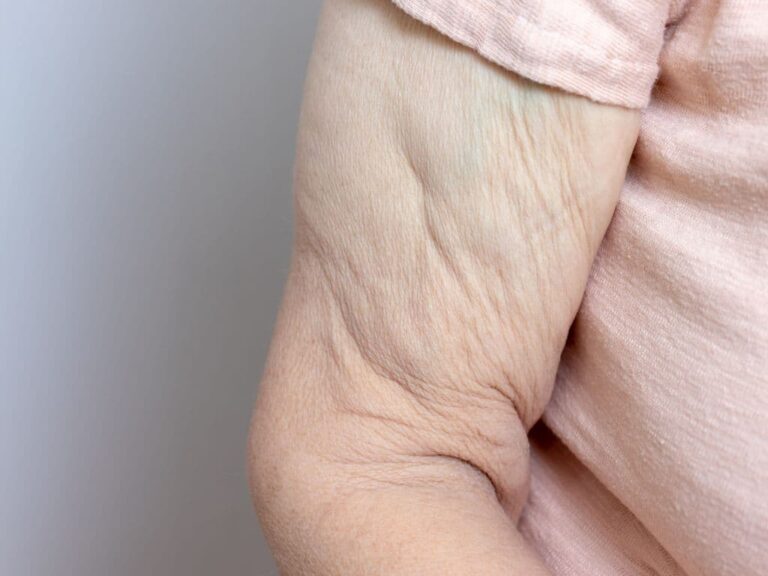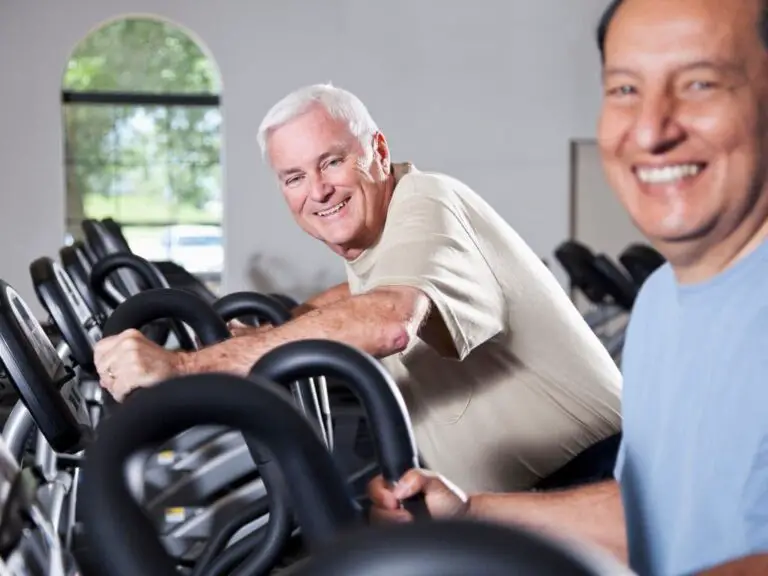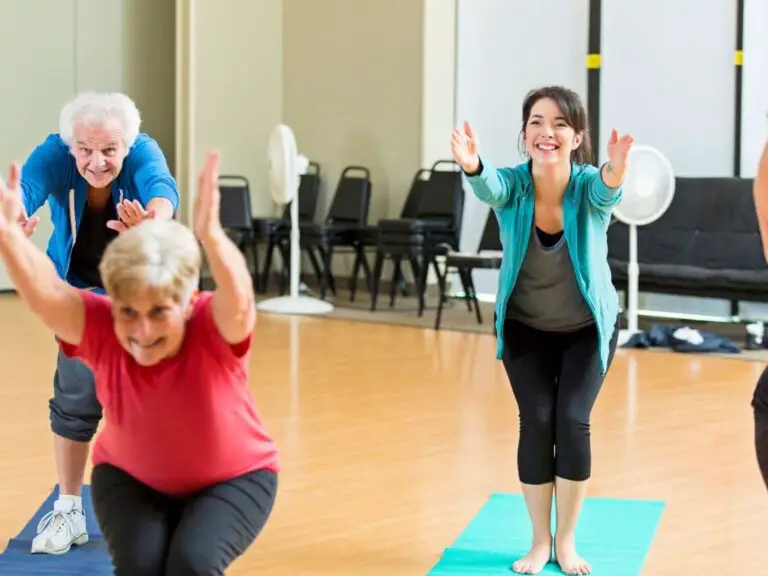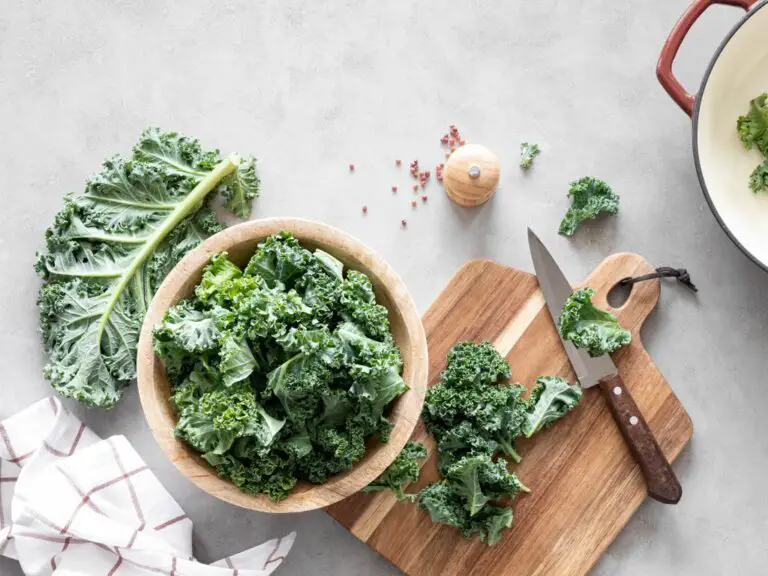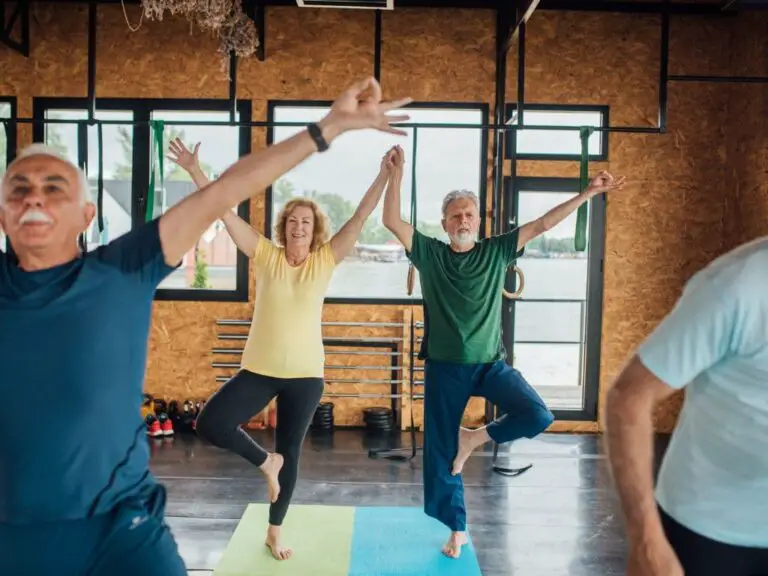Can You Still Build Muscle After the Age of 70?
As we age, there is often a decline in muscle mass and strength. This can lead to difficulties with balance, mobility, and independence. However, research shows that older adults can still build muscle with proper strength training and nutrition.
Individuals can still build muscle after the age of 70. Despite natural muscle loss with aging, older adults can achieve significant strength and muscle gains through consistent resistance training and proper nutrition, particularly a high-protein diet. It’s crucial to exercise safely and progressively under professional guidance to avoid injury.
While it may be more challenging, building muscle is still possible and highly beneficial after age 70.

The Effects of Aging on Muscle Mass and Strength
Around age 40, adults start to lose muscle mass at a rate of 0.5-2% per year. After age 70, this rate of sarcopenia (age-related muscle loss) tends to accelerate. Aging leads to reductions in muscle fiber size and number. There is also a loss of motor units, which are the nerve cells that stimulate muscle fibers.
This age-related loss of muscle mass is a major contributor to the loss of strength and function in older adults. On average, strength declines 15% per decade after age 50. Muscles may feel fatigued more quickly and struggle to perform daily activities like climbing stairs, carrying groceries, or getting up from a chair. Maintaining muscle strength is crucial for remaining independent into old age.
To build muscle at any age, it’s important to consume enough protein. Many experts recommend older adults consume 1.0-1.2g of protein per kilogram of body weight per day. Protein provides the amino acids muscles need to repair and rebuild after exercise. Older adults may need to aim for the higher end of the range to offset the effects of sarcopenia.
Consuming protein throughout the day maximizes muscle protein synthesis. Good sources include fatty fish, beans, eggs, and dairy products. If struggling to meet protein needs through food, protein supplements can help older adults reach optimal intake for muscle growth.
Older adults should couple a high-protein diet with exercising their muscles through strength training to see significant muscle gains. Without exercise, much of the extra protein may be unused and excreted from the body.
What Are the Best Exercises for Building Muscle After 70?
Resistance training is the most effective for building muscle. This includes body weight exercises like push-ups and squats. It also includes weight lifting and machines that provide resistance. Focusing on the major muscle groups with 2-3 sets of 8-12 repetitions, 2-3 times per week is ideal. Compound exercises like deadlifts, chest presses, rows, and shoulder presses that use multiple large muscle groups are especially beneficial.
As an alternative to traditional resistance training, some older adults enjoy high-intensity interval training (HIIT). This involves short bursts of intense activity like sprints or fast pedaling on a stationary bike, followed by rest periods. This can stimulate muscle growth and cardiovascular health.
For older adults, it’s best to start any new exercise routine slowly and progress gradually under proper guidance. A certified personal trainer who specializes in older populations can help design an appropriate program and ensure safety.
Here is a list of exercises for building muscle mass at 70:
| Exercise | Description |
|---|---|
| Push-ups | From the floor or against a wall, target chest, shoulders, and arms. Scale difficulty by adjusting hand placement. |
| Squats | Stand with feet shoulder-width apart, send hips back and down like sitting in a chair. Targets glutes, quads, hamstrings. Hold on to something for balance. |
| Planks | Hold a straight body position on hands and toes, keeping core engaged. Start with short 10-30 sec holds. |
| Lunges | Step forward with one leg, bending both knees to 90 degrees. Targets glutes, quads, hamstrings. Hold weights for added challenge. |
| Bicep Curls | Hold weights or household objects, keep elbows tight and curl up towards shoulders. Targets biceps. |
| Tricep Extensions | Hold weight overhead, keeping upper arm still, bend elbow to lower weight behind head. Targets triceps. |
| Shoulder Presses | Hold weights at shoulder height, straighten arms up over head. Targets shoulders. |
| Rows | Bend over or lay prone, pull weights or bands back towards chest, squeezing shoulder blades. Targets upper back. |
| Leg Extensions | Sit upright, extend one leg forward, hold, return to start. Targets quadriceps. Repeat on both sides. |
| Side Leg Lifts | Lay on side, extend top leg up, hold, lower. Targets outer thighs and glutes. Repeat on both sides. |
| Calf Raises | Stand holding support if needed, rise up on toes, lower back down. Targets calves. |
| Chest Flys | Lay on bench or floor, arms wide, bring arms together in front of chest. Targets chest. |
| Hip Abduction | Lay on side, raise top leg out to the side. Targets outer thighs. Repeat on both sides. |
| Front Raises | Hold weights at sides, raise arms forward up to shoulder height. Targets shoulders. |
| Lateral Raises | Hold weights at sides with elbows slightly bent, raise arms straight out to sides. Targets shoulders. |
| Bridges | Lay on back, press through heels to raise hips off floor. Targets glutes and hamstrings. |
| Palloff Press | Attach resistance band at chest height. Turn sideways and press band out. Targets obliques. |
| Woodchoppers | Stand with resistance band up high, pull down across body towards opposite hip. Targets core and shoulders. |
| Wall Sit | Lean back against wall at 90 degree knee angle like sitting in chair. Hold position. Targets quads. |
| Calf Stretch | Place hands on wall, step one foot back, press heel to floor. Stretch calf muscles. |
What Are the Benefits of Strength Training for Older Adults?
Building muscle with resistance exercise offers numerous benefits beyond simply getting stronger. Strength training can help:
- Increase bone density to protect against osteoporosis and fractures
- Improve balance and mobility, reducing risk of falls and injuries
- Support functional independence with daily tasks like carrying groceries
- Provide a sense of accomplishment and self-efficacy from getting stronger
- Reduce age-related symptoms like fatigue and depression
- Improve cognitive abilities like focus, planning, and memory
- Increase metabolism and help maintain a healthy body weight
For all these reasons, experts widely recommend strength training for older populations. Proper exercise is truly one of the best ways for older adults to maintain health and quality of life.
How to Safely and Effectively Strength Train as an Older Adult?
To reduce risk of injuries, older adults should take care to strength train safely. Some tips include:
- Starting with lighter weights and lower reps to establish proper form
- Allowing adequate rest between sets to avoid fatigue
- Avoiding exercise machines that place too much strain on joints
- Using stability balls and foam rollers to improve balance and alignment
- Stretching thoroughly after workouts to maintain flexibility
- Staying hydrated and avoiding exercise during extreme heat
It can also be helpful to vary your routine. Incorporate some low-impact exercises like water aerobics along with strength training. Try functional fitness exercises that mimic daily activities like squatting, lunging, and rotating your torso. This trains muscles used in everyday tasks.
Listen to your body. Avoid rapidly increasing weight or intensity. See a doctor before starting any exercise program. With appropriate precautions and guidance, almost anyone can safely achieve strength gains well into old age.
How Can Exercise Help Maintain Independence as You Age?
One of the biggest concerns of older adults is losing their ability to care for themselves and live independently. Research shows that staying physically active helps maintain the capacity to perform activities of daily living and live in one’s own home for longer.
Strength training builds the muscles needed to move around and complete basic tasks with ease. It also leads to better balance and mobility, which are essential for preventing dangerous falls. Stronger bones and improved cardiovascular health are also benefits of regular exercise.
In addition to physical perks, exercise can provide mental and emotionalbenefits that support independence. Physical activity can reduce depression and cognitive decline in older populations. It also promotes self-confidence, making it easier to maintain a positive attitude toward self-care.
Overall, dedicating time for regular strength training, aerobic activity, and stretching can go a long way toward preserving independence and quality of life into old age.
How Can I Make Exercise More Enjoyable After 70?
For older adults who are new to exercise, finding activities you actually enjoy is key to sticking with it. Consider exercising with a friend or partner for companionship and mutual encouragement. Varying your workouts will help avoid boredom – try cycling one day, gardening the next, and strength training the day after.
Playing music during your workout can make the time pass more quickly. Tracking your progress by recording distances cycled or amount of weight lifted can also boost motivation. Joining group exercise classes tailored to older adults can provide social benefits as well.
Focus on functional exercises you need for daily activities like carrying groceries. This provides a practical purpose beyond just “getting in shape.” Set realistic goals like being able to lift a certain weight or walk a certain distance. Celebrate each achievement.
The most important thing is choosing activities you find rewarding and pleasant, not punishing. Find what you love – whether it’s swimming, tai chi, or ballroom dancing – and fitness can be a joy well into your golden years.
Conclusion
While muscle loss is a natural part of aging, older adults can still make significant strength and muscle gains with consistency. Combining resistance training with proper nutrition, especially sufficient protein, is the recipe for success. Exercising safely and aiming to make fitness enjoyable are also key for long-term adherence.
With the right approach, men and women over 70 can grow muscle to enhance health, maintain independence, and improve quality of life. So don’t settle for a sedentary existence just because you’ve passed a certain birthday. There are always opportunities to get active, get stronger, and thrive at any age.
Frequently Asked Questions
-
Can you build muscle at the age of 70?
Seniors can still bulk up on muscle by pressing iron. As we age, our muscle mass drops at astonishing rates. Researchers found that lifting weights can help people over 50 not only preserve but even increase muscle mass.
-
What drink helps build muscle?
The effects of nonfat milk and soy protein drinks on muscle building after weight training were compared. Stuart M., a researcher, said that while all three groups were able to gain muscle, the results for milk drinkers showed the greatest improvement.
-
How much walking should a 70 year old woman do?
Adults 65 years and over need to exercise at least 150 minutes per week. This could be 30 minutes each day or 5 days a weeks of moderate activity like walking. They also need to do 75 minutes per week of intense activity like running, jogging or hiking.
-
How often should seniors walk?
Seniors over 65 should be able to get 2.5 hours of aerobic activity (such as walking briskly) each week. This averages to around 30 minutes per day on most days. You can also do 1 hour 15 minutes of intense exercise each week (such as running or jogging).
-
Is peanut butter good for muscle gain?
Peanut butter contains four grams of protein per tablespoon, which makes it an excellent source for protein to build muscle. Peanut butter contains monounsaturated fats and antioxidants, as well as vitamins & minerals. This peanut butter will ensure your body stays healthy and functions properly.
-
How fast should a 76 year old woman walk?
It’s easy to start walking briskly for 30 minutes five days per week. Brisk walking is 100 steps per hour. You can also walk 3 miles an hour.
-
How long should an 80 year old exercise?
If you’re already active, aim to do 150 minutes or more of moderate activity per week. 75 minutes or more of vigorous intensity exercise if possible. Reduce the amount of time you spend sitting down or lying down, and replace long periods of inactivity with something.
-
What vitamins are good for building muscle?
Vitamin B3 is a vitamin that bodybuilders use to increase muscle vascularity, and boost testosterone production. Vitamin B3 is not just good for muscle growth, but also helps with recovery and muscle building. To get all of the B vitamins, take a B3 vitamin supplement or B complex Vitamin.
-
Can you build muscle at age 70?
Seniors can still bulk up on muscle by pressing iron. As we age, our muscle mass drops at astonishing rates. Researchers found that lifting weights can help people over 50 not only preserve but even increase muscle mass.
-
How far should an 82 year old walk?
The recommended walking distance for seniors is 113 steps per minute. According to the study, seniors aged 65-80 years could walk an incredible amount of steps each minute. It was between 96 to 136 for women. They walked between 85 and 125 steps per minute for men.

